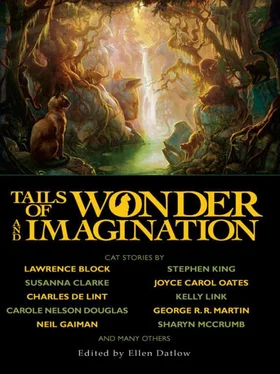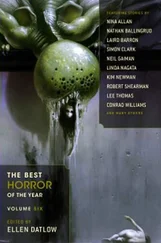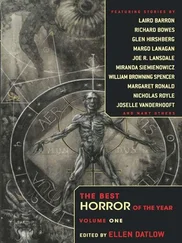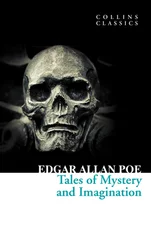Ellen Datlow - Tails of Wonder and Imagination
Здесь есть возможность читать онлайн «Ellen Datlow - Tails of Wonder and Imagination» весь текст электронной книги совершенно бесплатно (целиком полную версию без сокращений). В некоторых случаях можно слушать аудио, скачать через торрент в формате fb2 и присутствует краткое содержание. Год выпуска: 2010, ISBN: 2010, Издательство: Night Shade Books, Жанр: Фэнтези, Фантастика и фэнтези, Ужасы и Мистика, на английском языке. Описание произведения, (предисловие) а так же отзывы посетителей доступны на портале библиотеки ЛибКат.
- Название:Tails of Wonder and Imagination
- Автор:
- Издательство:Night Shade Books
- Жанр:
- Год:2010
- ISBN:978-1-59780-170-6
- Рейтинг книги:5 / 5. Голосов: 1
-
Избранное:Добавить в избранное
- Отзывы:
-
Ваша оценка:
- 100
- 1
- 2
- 3
- 4
- 5
Tails of Wonder and Imagination: краткое содержание, описание и аннотация
Предлагаем к чтению аннотацию, описание, краткое содержание или предисловие (зависит от того, что написал сам автор книги «Tails of Wonder and Imagination»). Если вы не нашли необходимую информацию о книге — напишите в комментариях, мы постараемся отыскать её.
collects the best of the last thirty years of science fiction and fantasy stories about cats from an all-star list of contributors.
Tails of Wonder and Imagination — читать онлайн бесплатно полную книгу (весь текст) целиком
Ниже представлен текст книги, разбитый по страницам. Система сохранения места последней прочитанной страницы, позволяет с удобством читать онлайн бесплатно книгу «Tails of Wonder and Imagination», без необходимости каждый раз заново искать на чём Вы остановились. Поставьте закладку, и сможете в любой момент перейти на страницу, на которой закончили чтение.
Интервал:
Закладка:
Tuf’s face was utterly without emotion. He stared.
“One,” said Kefira Qay.
Tuf sat immobile.
“Two,” she said.
Tuf frowned, and there were wrinkles in his chalk-white brow.
“Three,” Qay blurted.
“No,” Tuf said quickly. “Do not fire. I shall do as you insist. I can begin cloning within the hour.”
The Guardian holstered her laser.
So Haviland Tuf went reluctantly to war.
On the first clay he sat in his war room before his great console, tight-lipped and quiet, turning dials and pressing glowing buttons and phantom holographic keys. Elsewhere on the Ark , murky liquids of many shades and colors spilled and gurgled into the empty vats along the shadowy main shaft, while specimens from the great cell Library were shifted and sprayed and manipulated by tiny waldoes as sensitive as the hands of a master surgeon. Tuf saw none of it. He remained at his post, starting one clone after another.
On the second day he did the same.
On the third day he rose and strolled slowly down the kilometers-long shaft where his creations had begun to grow, indistinct forms that stirred feebly or not at all in the tanks of translucent liquid. Some tanks were fully as large as the Ark ’s shuttle deck, others as small as a fingernail. Haviland Tuf paused by each one, studied the dials and meters and glowing spyscopes with quiet intensity, and sometimes made small adjustments. By the end of the day he had progressed only half the length of the long, echoing row.
On the fourth day he completed his rounds.
On the fifth day he threw in the chronowarp. “Time is its slave,” he told Kefira Qay when she asked him. “It can hold it slow, or bid it hurry. We shall make it run, so the warriors I breed can reach maturity more quickly than in nature.”
On the sixth day he busied himself on the shuttle deck, modifying two of his shuttles to carry the creatures he was fashioning, adding tanks great and small and filling them with water.
On the morning of the seventh day he joined Kefira for breakfast and said, “Guardian, we are ready to begin.”
She was surprised. “So soon?”
“Not all of my beasts have reached full maturity, but that is as it should be. Some are monstrous large, and must be transshipped before they have attained adult growth. The cloning shall continue, of course. We must establish our creatures in sufficient numbers so they will remain viable. Nonetheless, we are now at the stage where it is possible to begin seeding the seas of Namor.”
“What is your strategy?” asked Kefira Qay.
Haviland Tuf pushed aside his plate and pursed his lips. “Such strategy as I have is crude and premature, Guardian, and based on insufficient knowledge. I take no responsibility for its success or failure. Your cruel threats have impelled me to unseemly haste.”
“Nonetheless,” she snapped. “What are you doing?”
Tuf folded his hands atop his stomach. “Biological weaponry, like other sorts of armament, comes in many forms and sizes. The best way to slay a human enemy is a single laser burst planted square in the center of the forehead. In biological terms, the analogue might be a suitable natural enemy or predator, or a species-specific pestilence. Lacking time, I have had no opportunity to devise such an economical solution.
“Other approaches are less satisfactory. I might introduce a disease that would cleanse your world of dreadnaughts, fire-balloons, and walkers, for example. Several likely candidates exist. Yet your sea monsters are close relatives of many other kinds of marine life, and those cousins and uncles would also suffer. My projections indicate that fully three-quarters of Namor’s oceangoing life would be vulnerable to such an attack. Alternatively, I have at my disposal fast-breeding fungi and microscopic animals who would literally fill your seas and crowd out all other life. That choice too is unsatisfactory. Ultimately it would make Namor incapable of sustaining human life. To pursue my analogy of a moment ago, these methods are the biological equivalent of killing a single human enemy by exploding a low-yield thermonuclear device in the city in which he happens to reside. So I have ruled them out.
“Instead, I have opted for what might be termed a scattershot strategy, introducing many new species into your Namorian ecology in the hopes that some of them will prove effective natural enemies capable of winnowing the ranks of your sea monsters. Some of my warriors are great deadly beasts, formidable enough to prey even on your terrible dreadnaughts. Others are small and fleet, semi-social pack hunters who breed quickly. Still others are tiny things. I have hope that they will find and feed on your nightmare creatures in their younger, less potent stages, and thereby thin them out. So you see, I pursue many strategies. I toss down the entire deck rather than playing a single card. Given your bitter ultimatum, it is the only way to proceed.” Tuf nodded at her. “I trust you will be satisfied, Guardian Qay.”
She frowned and said nothing.
“If you are finished with that delightful sweet-mushroom porridge,” Tuf said, “we might begin. I would not have you think that I was dragging my feet. You are a trained pilot, of course?”
“Yes,” she snapped.
“Excellent!” Tuf exclaimed. “I shall instruct you in the peculiar idiosyncrasies of my shuttle craft, then. By this hour, they are already fully stocked for our first run. We shall make long low runs across your seas, and discharge our cargoes into your troubled waters. I shall fly the Basilisk above your northern hemisphere. You shall take the Manticore to the south. If this plan is acceptable, let us go over the routes I have planned for us.” He rose with great dignity.
For the next twenty days, Haviland Tuf and Kefira Qay crisscrossed the dangerous skies of Namor in a painstaking grid pattern, seeding the seas. The Guardian flew her runs with elan. It felt good to be in action again, and she was filled with hope as well. The dreadnaughts and fire-balloons and walkers would have their own nightmares to contend with now—nightmares from half-a-hundred scattered worlds.
From Old Poseidon came vampire eels and nessies and floating tangles of web-weed, transparent and razor-sharp and deadly.
From Aquarius Tuf cloned black raveners, the swifter scarlet raveners, poisonous puff-puppies, and fragrant, carnivorous lady’s bane.
From Jamison’s World the vats summoned sand-dragons and dreerhants and a dozen kinds of brightly colored water snakes, large and small.
From Old Earth itself the cell library provided great white sharks, barracuda, giant squid, and clever semi-sentient orcas.
They seeded Namor with the monstrous grey kraken of Lissador and the smaller blue kraken of Ance, with water-jelly colonies from Noborn, Daronnian spinnerwhips, and bloodlace out of Cathaday, with swimmers as large as the fortress-fish of Dam Tullian, the mockwhale of Gulliver, and the ghrin’da of Hruun-2, or as small as the blisterfins of Avalon, the parasitical caesni from Ananda, and the deadly nest-building, egg-laying Deirdran waterwasps. To hunt the drifting fire-balloons they brought forth countless fliers: lashtail mantas, bright red razorwings, flocks of scorn, semi-aquatic howlers, and a terrible pale blue thing—half-plant and half-animal and all but weightless—that drifted with the wind and lurked inside clouds like a living, hungry spiderweb. Tuf called it the-weed-that-weeps-and-whispers, and advised Kefira Qay not to fly through clouds.
Читать дальшеИнтервал:
Закладка:
Похожие книги на «Tails of Wonder and Imagination»
Представляем Вашему вниманию похожие книги на «Tails of Wonder and Imagination» списком для выбора. Мы отобрали схожую по названию и смыслу литературу в надежде предоставить читателям больше вариантов отыскать новые, интересные, ещё непрочитанные произведения.
Обсуждение, отзывы о книге «Tails of Wonder and Imagination» и просто собственные мнения читателей. Оставьте ваши комментарии, напишите, что Вы думаете о произведении, его смысле или главных героях. Укажите что конкретно понравилось, а что нет, и почему Вы так считаете.












